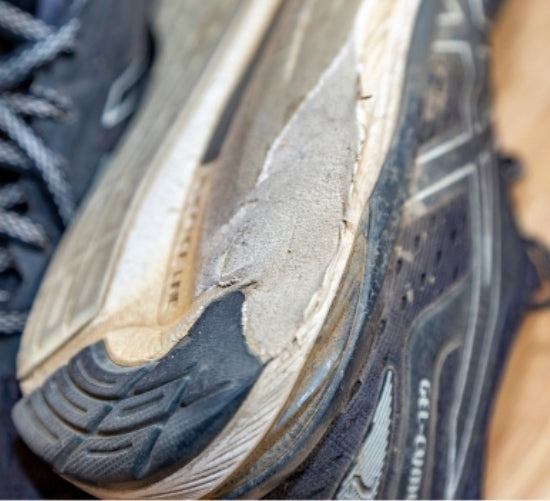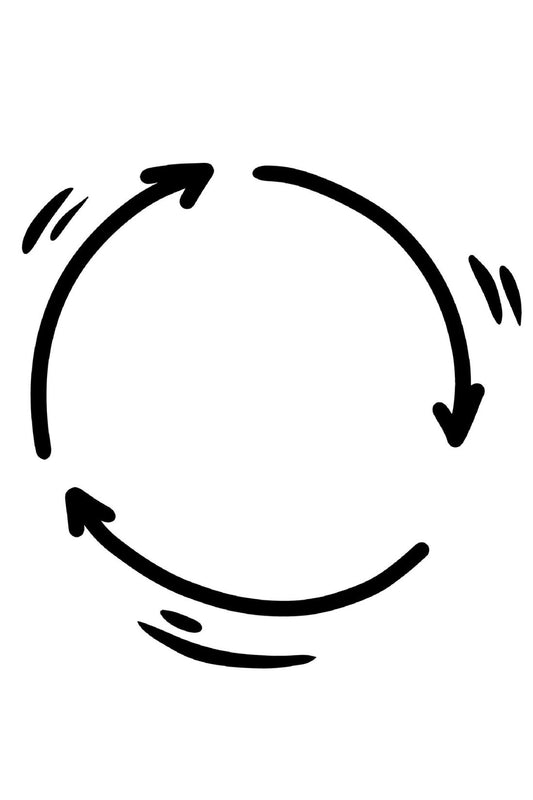Overpronation can cause excess strain for runners and walkers but it's not typically serious. Watch our video to see what overpronation looks like in action, read about overpronation causes and symptoms, and shop for running shoes that help address overpronation.
Overpronation describes runners and walkers whose arches collapse too much upon impact, causing the foot to roll inward.
The excessive collapse of the arch can put strain on tendons and ligaments in the foot and leg and increases the risk of injury. Overpronation is more likely to occur for runners with flat feet and lower arches.
Symptoms of Overpronation
Additionally, the following may be symptoms of overpronation.
- Shin splints
- Achilles tendonitis
- Bunions
- Heel Pain
- Plantar Fasciitis
- Knee Pain
- Hip Pain
- Back Pain
That said, the most reliable way to determine whether you overpronate is to get your gait analyzed either at a running store or by a healthcare professional. In a gait analysis, someone will watch you walk and capture slow-motion video of you running to assess the degree to which you pronate.
How do I know if I overpronate?
The most reliable way to know whether you overpronate is to get a gait analysis. Any running store should be able to assess your gait by taking some measurements of your arch, watching you walk, and observing you run in a neutral shoe.
That said, there are some at-home tests you can use to get a good idea of whether or not you overpronate.
Check the wear pattern on your shoes
The first is to take a look at the wear pattern on your current pair of running or walking shoes.
Overpronators will often see excessive wear on the inner half of the shoe at the forefoot as in the photo shown below.

For a more detailed discussion of analyzing the wear pattern on your shoes, see our article on the difference between neutral and stability shoes.
The wet foot test
The second – and, it should be said, less reliable – method for figuring out if you’re an overpronator is the wet foot test.
Simply wet your feet and stand on a piece of cardboard for a few seconds.
When you step off, take a look at the imprint of your foot. If your footprint is more of an oval shape with no or minimal dry area where an arch would be, you probably overpronate. If there is a dry spot around the arch – or even a dry gap between your heel and ball-of-foot – you likely have a more neutral gait.

How to treat overpronation
Overpronation doesn’t mean you can’t run. Plenty of elite runners overpronate. By considering the following, you can avoid the potential injury risks of overpronation.
Shoes for overpronation
Runners who overpronate may benefit from a stability shoe. Basically, a stability shoe has support on the medial side of the shoe to encourage the foot to move in a more neutral pattern. Stability shoes have been shown to alleviate some of the symptoms of overpronation, but it’s unclear how effective they are at preventing injury. However, if you're interested in buying stability shoes to address overpronation, please read our article on the best stability shoes.
Overall, wearing a comfortable and well-fitting running shoe has been shown to reduce the risk of running-related injuries. Getting your gait analyzed, talking to an expert about your running routine and goals, and trying on a few different shoes remains the best way to find the best shoe for your foot.
Upgrade your insoles
Adding better insoles to your shoes can provide additional support for your arch and heel. By supporting the arch and heel, these inserts help address the causes of overpronation and related injuries by aligning the foot for a neutral gait and reducing the amount the arch flexes during the gait cycle.
For many runners, an over-the-counter running shoe insole from brands like Superfeet or Currex will mitigate symptoms of overpronation. Podiatrists can prescribe and make custom orthotics for severe overpronation but they are often much more expensive. A running store should be able to fit you for the right insole for your foot.
Pay attention to the surfaces you run on
If you’re in pain from any of the symptoms listed above due to overpronation, running on softer surfaces like grass, trails, or a track can help reduce the impact of running and alleviate some pain.









